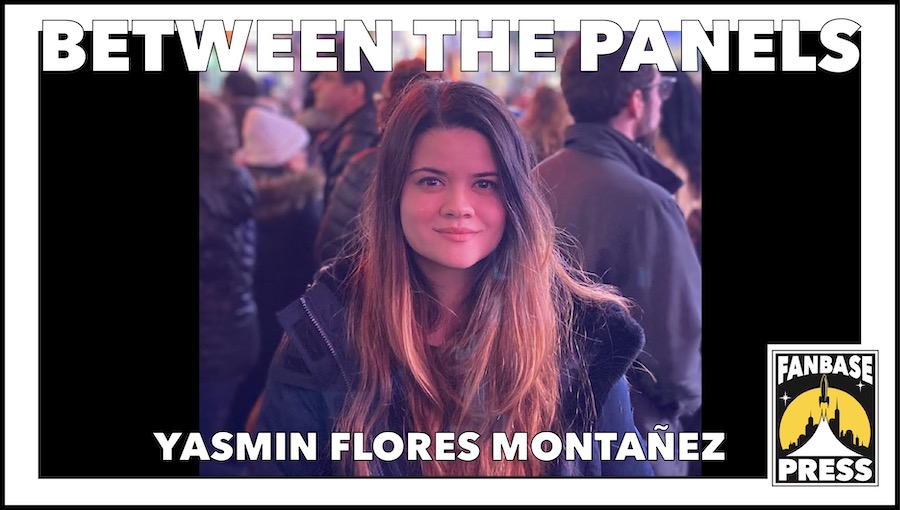“Between the Panels” is a bi-weekly interview series focusing on comic book creators of all experience levels, seeking to examine not just what each individual creates, but how they go about creating it.
Since earning an MFA from Savannah College of Art and Design [SCAD] and graduating from the inaugural Milestone Initiative Talent Development Workshop, Yasmin Flores Montanez has hit the comics scene in a big way. Her artistic resume includes not only the “Big Two,” but IDW, Black Mask, Scout, and more.
First off, the basics…
Your specialties (artist/writer/letterer/inker/etc.): Artist
Your home base: Puerto Rico
Website: yasfm.com
Social Media
Instagram: @yasfmart
Twitter: @yasfmart
Facebook: @YASFMART
Bluesky: @yasfmart
Fanbase Press Contributor Kevin Sharp: I always start off with the big question: Why comics? What attracts you to working in this medium specifically?
Yasmin Flores Montañez: Comics to me was the very first medium I consumed when I was a kid. My first love of art was through this medium. To me, art is about expressing, telling a story, and creating a reaction with the spectator/ reader and that’s exactly what comics do. I want to tell and create stories that inspire or create a reaction and/or emotion. That’s the reason why I decided to pursue comics seriously.
KS: What did your comics consumption look like growing up? Was this something you had easy access to at an early age?
YF: When I was a kid I was mostly reading manga, things like Sailor Moon, Yuyu Hakusho, Inuyasha, Fullmetal Alchemist, Fruits Basket, and Dragon Ball. I don’t think I had easy access to it, because they weren’t many stores near where I lived; however, it wasn’t impossible to get my hands on it. Back in the day, I would just try to save all the money my family would give me and buy manga or comics from the Borders bookstore. If I didn’t have money, I would sit at the section of manga and comics and read it while my sisters were shopping for new clothes.
KS: Do you happen to remember the first comic you ever bought? Or one of the first?
YF: I don’t remember exactly what was the issue, but it was an X-Men and Teen Titans comic. My dad actually got them for me when I was a kid at a local comic book store. After that, I got hooked, especially with the X-Men.
KS: Because those teams have had so many different versions, which were the ones you first met? Which characters stood out to you?
YF: For the X-Men, it was the ’90s version. My favorites were Rogue, Gambit, and Jubilee. It was mostly their personalities, not just how they looked. I liked that it was a diverse team for sure, but the reason it worked was because each of the characters had depth and story behind them. Jim Lee and Chris Claremont really made me want to know more about the X-Men. I didn’t read it when it came out because I wasn’t born yet — my dad just brought me old comics when I was around fourteen or fifteen years old. That’s when I really got more into comics, not just manga. I felt drawn more to the X-Men as a diverse group of individuals and I just thought they were cool.
In the case of the Teen Titans, it was the early 2000s version. My favorites were Wonder Girl and Raven. I got super hooked, too, with the Titans, especially after watching the animated series. I was following the cartoons more since I had easier access to the TV than comics as a kid.
KS: Looking back, why do you think those teams and those runs worked so well for who you were as a reader at the time?
YF: I think it was because I felt more identified with the diverse characters I saw that were more aligned with my real-life surroundings. I also really liked the Teen Titans and it was again because of that. That’s why it’s important to have stories with different types of characters [where] kids can see themselves and their friends reflected.
KS: Were you exposed to other comic book characters outside of comics at all during that time?
YF: Yes, mostly cartoons like Batman the Animated Series, Superman, Batman Beyond, Static Shock, and Teenage Ninja Mutant Turtles. Love them all.
KS: What did your artistic life look like? What kinds of things did you enjoy creating as a kid?
YF: It was all Sailor Moon. It’s the reason why I got into drawing. I loved it so much that my family would get me anything Sailor Moon-related. My room had huge posters of the Sailor Scouts and … I gathered all those stickers, posters, trading cards, albums, toys, my lunchbox, etc. as references to draw my own Sailor Scouts. I used to imagine myself as one of them drawing all sorts of different versions of me as a Sailor Scout. I have a lot of love for Sailor Moon.
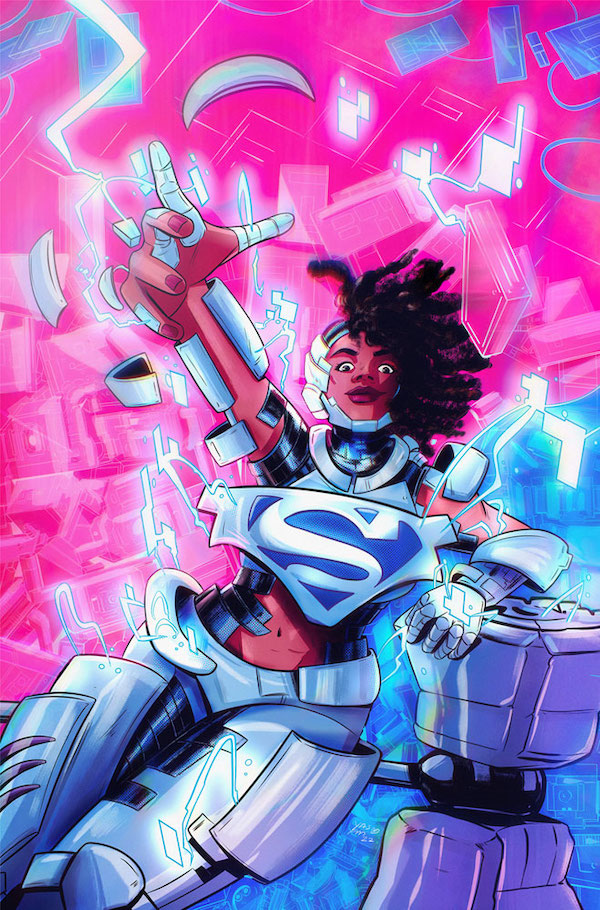
KS: Can you remember an art project that felt like it was a big deal for you to finish back then, whatever age that was and whether or not anyone else ever saw it?
YF: I remember a kid from my class told me that I could only draw cartoons and that I couldn’t do pretty landscapes. He was sort of right because I hadn’t practiced drawing environments, but I took it as a challenge and practiced a lot to draw one. I was proud when I finished a drawing of the city of Kyoto. I only showed it to that kid and my family. To me, it was a big deal that I could also draw environments. It’s a very old drawing that has a lot of flaws, but I still have it somewhere in my parents’ house.
KS: You ultimately got an MFA from SCAD, but when did the idea of pursuing art professionally begin for you? Was it a longtime dream or did you have a sudden inspiration at some point?
YF: I didn’t pursue art professionally until I applied [to SCAD] in 2016. Before that, I studied and graduated with a Bachelor’s in Art History and Languages at the University of Puerto Rico. After graduation, I worked in an art gallery and was in the process of applying for a Master’s degree in Art History. It obviously didn’t go as planned. Working at the art gallery back home had me interacting with many talented artists in the fine art industry who were following their passion and it made me question myself. Why wasn’t I doing the same? I love Art History, but I wanted to draw and tell stories that could inspire people. That’s when I decided to pursue comics professionally. I knew I needed time to get better so I applied to SCAD.
KS: Was there any other career path you were seriously thinking of during that time? Or if art hadn’t happened, what was an alternative where you think you could have been happy?
YF: I wanted to work as an art historian in museums, and my mom wanted me to be a lawyer. I was debating if I should continue in the academic field of Art History or apply to law school. My family was even determined to provide economic support if I wanted to become a lawyer; however, I knew I wouldn’t be happy. I think if I wasn’t illustrating comics I would be working at a museum. Art to me had to be present in my life in one way or another.
KS: After you decided you wanted to pursue comics professionally, what were your first concrete steps to making that a reality? Did you have an action plan of some kind to get your work noticed?
YF: [Going] to cons! That’s what I did even before going to study for my Master’s at SCAD. I also used to buy the director’s cut issues that DC Comics used to do in order to better understand how a comic book was made. Those were fun and if you can get your hands on one, it’s great to get that inside look. Apart from that, I would also download scripts online so I could draw them and have some sequential pages to show at cons. I was mostly showing my work to artists and writers who were willing to look at them. I would try my best to address the feedback I got, and every time there was a convention happening, I would bring a new portfolio.
I recognized that I needed to get better and have a Plan B if things didn’t work out, and that’s where SCAD came in. You obviously don’t need to study to work in comics or any illustration field, but for me, it made sense to be able to have a degree that in theory would later allow me to work as an educator if things didn’t work out. I think the best advice for aspiring pro creators is to go to conventions — especially cons like NYCC — to put your work out there and be able to receive feedback, work on the notes, and come back the next year with a new portfolio addressing those notes. The best action plan you can have is to be patient, have perseverance, and be self-aware of what level you are in and what level you need to be in.
KS: What was your first officially published comics work?
YF: The first published work that was paid and in print was a variant cover art that I did for the series Marvel Action Line: Captain Marvel #3, a collaboration between IDW and Marvel Comics. But before that, I had an online publication that was my first ever paid gig. It was a one-page comic I wrote, illustrated, and lettered myself for Oni Press for the anthology, Draw Out the Vote.
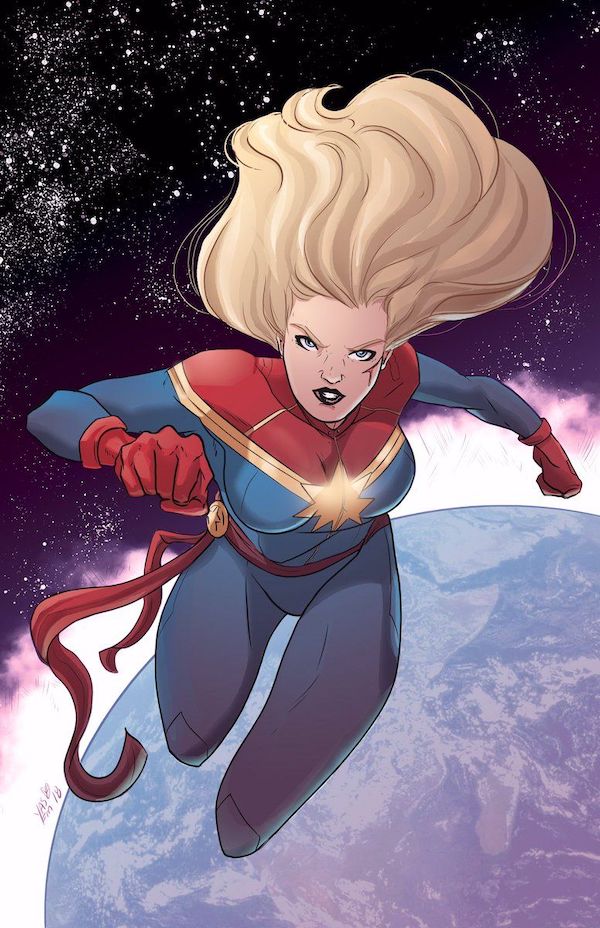
KS: I recently chatted with Andrea Rosales, who was also in the DC/Milestone program. How did that program get on your radar and what made you decide to apply?
YF: I always try to be up to date on comics news. I saw it as soon as they announced it. The next day that DC gave the announcement, Vita Ayala shared it on Twitter and I decided to apply. You always have the no, so I figured I had nothing to lose. To be completely honest, I didn’t think I was going to get chosen since I had applied previously to other talent hunts from DC Comics and got those generic rejections. I was genuinely surprised when they told me I got into the program over a Zoom meeting. I started to cry out of pure excitement. Even today just remembering that day and the whole experience with the Milestone Initiative makes me smile.
KS: Is there something specific you’d say you got out of your time there? Could be an actual skill, some knowledge about the business, friendships, anything else…
YF: One of the best things I got from the program was meeting people who were in the same boat as me—full of dreams, excitement, and struggles. It is important to have that community of people who actually understand what you are going through in this difficult journey. Apart from that, I grew a lot as an artist and storyteller with the mentorship I received. I was lucky enough to have Francis Manapul — an artist that I follow and admire greatly — as my mentor, and he went above and beyond to help me and my teammate Ashley Allen get better at our craft. DC Comics really gave us the whole experience, from a mentorship to an inside-the-business look, including financial workshops which honestly are very important as freelancers.
KS: As someone who’s done a selection of comics covers, what do you appreciate about covers when you’re looking at a wall of comics? What traits of a good cover really capture your attention?
YF: Composition and color are things I appreciate in a cover. A cover is hard to do, because it needs to be eye-catching. I try to always keep in mind what looks pleasing to the eye in terms of composition and to bring vibrant fun colors into the mix. There are obviously a lot of amazing cover artists out there, but, lately, I have really enjoyed the covers that Simone Di Meo and Edwin Galmon have been putting out there for their fun compositions. I also have to mention Sweeney Boo’s cover, because her use of color and light is stunning, as well. I think all of those artists really put [out] beautiful cover work, and you can learn a lot from just looking at their covers.
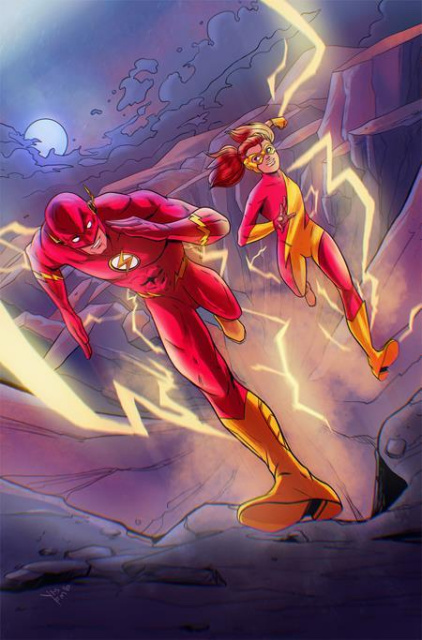
KS: Thumbs up or thumbs down: listening to music or other background noise while you work?
YF: It depends on my mood of the day and what I’m actually working on. So, half thumbs up? Haha. If I’m working on thumbnails/ layouts, I don’t listen to anything. I need complete concentration and silence in order to move from that white piece of paper to actual drawings; however, when I’m inking or cleaning up roughs, I do listen to music or podcasts. My playlist again depends on the mood, I listen to background music like lo-fi but also things that really hype me up like reggaeton, salsa, rock, boleros, etc. When I get tired of my playlist or don’t want to hear any music, I listen to a podcast. Mostly topics that are interesting to me from art history, mental health, and science. I never watch movies or TV shows since I find them to be too distracting for me.
KS: Please tell us about a hobby of yours totally unrelated to art or comics. Something you study, collect, practice, etc.
YF: This is a really hard question to answer. Haha, if I am being completely honest, I feel I don’t have a lot of hobbies like I used to. I love drawing so much that my hobby is drawing, just projects that are not work-related. That said, I do exercise at least 4-5 times a week to keep myself active and in good health. I run a lot and do some weight training, as well; however, I feel that is more part of my routine instead of a hobby.
KS: If there was a Comic Book Hall of Fame and you got to nominate one title to be included, what would your pick be? A work that represents the medium at its very best…
YF: Oh, man, this is difficult to answer, as well. There are a lot of great comic books out there and they vary by genre. I also feel like I haven’t read a lot of comic books that people consider the best. I’ll mention two comic books that I really love and that inspired me as an artist and storyteller. One is Batman: The Long Halloween by Jeph Loeb and Tim Sale, and the second one is Solanin by Inio Asano. I feel both of these books capture me instantly with not only their storylines but also the visuals. They made me feel either intrigued or completely heartbroken, and that’s what a comic book is to me — a perfect marriage between the story and the art. I feel art, in whatever medium it is, needs to create a reaction in the spectator, and that’s what those two books did.
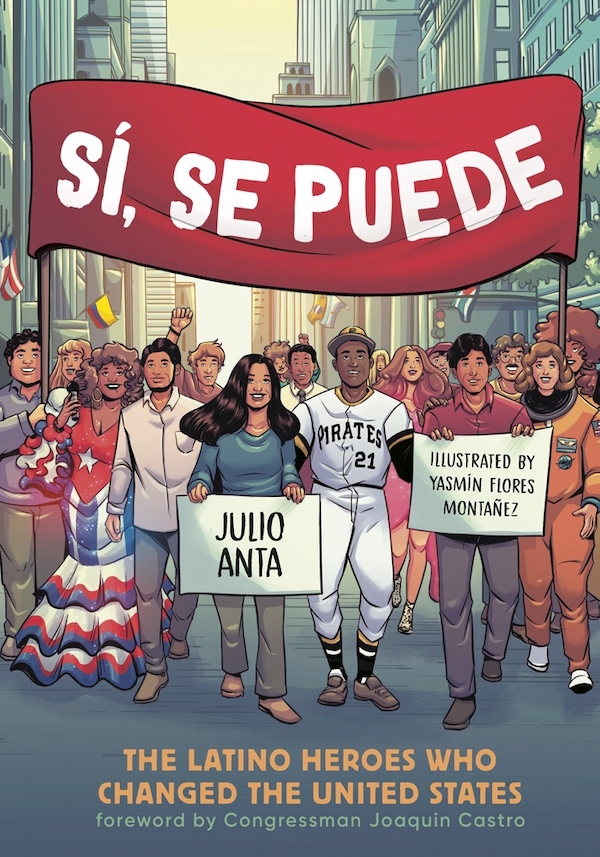
KS: Finally, let readers know what you have out now/what you have coming up that they should be on the lookout for.
YF: If you haven’t read Action Comics #1054-1056, I invite everyone to read it. It was a blast of fun to work on those short stories I did with Steel. As well as Icon vs. Hardware. The last issue of the series comes out I believe on October 31st. I also have an original graphic novel hitting the shelves on October 10 titled Sí, Se Puede. The writer of this OGN, Julio Anta, is another cohort of the Milestone Initiative. I have another OGN that I’m working on, as well, that is titled We Are Pan that will come out in Fall 2025. We still have to wait a bit for that one. That said, I am beyond excited to have everyone read the conclusion of Icon vs. Hardware, as well as dive into a little bit of history with Sí, Se Puede.

